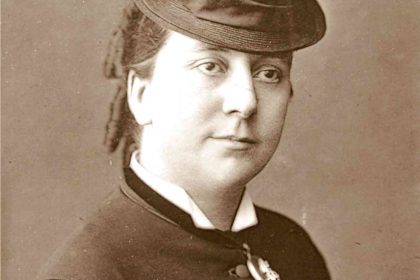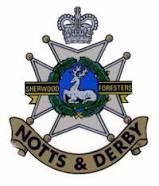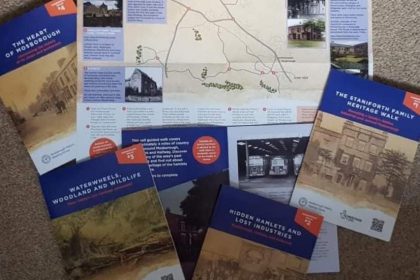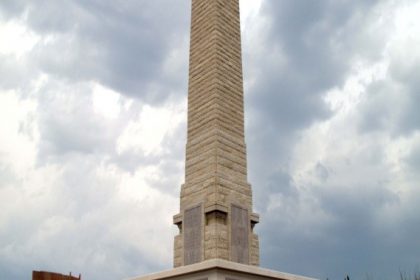Christopher Rotherham and ‘The Sheffield Outrages’ by John Rotherham
Mr. Overend: Have you paid to the union,
Witness: No, I would rather rob them of a sovereign than give them one. (Laughter.)
Mr. Overend: After the explosion, did you go to the secretary of the union and complain?
Witness: Not I. I would rather have blown them up. (Laughter.)
The secretaries used to come to our men, but they would not see me, as they did not like me. (Laughter.)
An extract from Christopher Rotherham’s evidence to the Sheffield Trades Unions Commission on 25th June 1867, as reported in the Sheffield Independent.
–oOo–
During the mid-nineteenth Century, social and working conditions for the average worker in Britain were declining. The success of the metal working trades in Sheffield and the surrounding region had fuelled a world demand for consumer and agricultural goods that had led to the imposition of longer working hours, poorer conditions, a decline in safety standards and demands for higher productivity from the workforce[1].
In response to this growing industrialisation, workers started to organise, and by the mid-late 1860’s the influence of trade unions was becoming apparent. However, their impact was minimal. Employers were resistant to their demands, and militancy seemed to be the only option for discontented workers who could see no other way of securing improvement in their conditions. In Sheffield, their frustration became evident when the trade unions began to provoke violence against employers and those workers who refused to become union members. When the militancy turned to the use of explosive devices and murder, its effects became known collectively as “The Sheffield Outrages”[2].
Such was the concern about these developments that, in 1867, the Home Secretary established a Special Commission of Inquiry, at which a number of people were encouraged to testify. Among those was Christopher Rotherham of Dronfield, a small metal manufacturer of the period[3].
Born in Troway in 1789, Christopher was descended from a long line of sicklesmiths in the Moss Valley, tracing their history back over many generations. He had married Alice Staniforth, the eldest daughter of John Staniforth of Mosborough, a long-established sickle manufacturer, and as was customary for families associated with the Cutler’s Company of Sheffield, the ceremony had taken place at Sheffield Parish Church in 1813[4]. He began trading on his own account after the death of his father, another Christopher, in 1807 and openly declared himself to be “obnoxious” to the Sickle Grinders Union, which had attempted to recruit his employees into membership.
Christopher had moved his young family to premises in Dronfield in the late 1820s, probably encouraged and assisted by his older brother, Thomas (my 3x great grandfather) who was operating the Birley Hay sickle works near Ridgeway at the time[5]. The house, workshop, grinding mill and dam, now demolished, were located on the site of the former Coal Aston corn mill on the river Drone, near to Chesterfield Road, then part of the Hallowes Farm estate.
Expansion of the business was rapid and by the time of the Census in 1851, he was employing 20 men, many from his own extended family. He had purchased several adjoining fields or closes when the Hallowes Farm estate was sold in 1854 on the death of Mrs. E. M. Smith of Dunston Hall and additionally, by 1856 he had acquired three freehold and copyhold farms, land, quarries, woodland and several cottages in Troway. His business interests had also been expanded to include the operation of Pearson’s Wood Colliery and Coke Ovens[6].
Typical of industrialists of his time, Christopher Rotherham was fiercely Non-Conformist and had subscribed, along with his son Christopher and son-in-law John Henry Harrison, towards the building of a new Independent Chapel in Dronfield[7]. He was eligible for entry onto the Register of Electors under the new provisions of the Reform Act of 1832 by virtue of his property in Troway, the annual rental on the Unstone Lane Grinding Mill and houses and workshops in Queen Street and Wentworth Street in Crookes, Sheffield, but there is no evidence that he was active politically. He did serve as a juror at the Derbyshire Quarter Sessions however, on at least one occasion[8]. Community life for the family seems to have revolved largely around the White Swan Inn in Dronfield, where he had a wide circle of friends. There would have been much ribaldry when he won second prize for the Best cock of any breed at the White Swan’s first Dronfield Poultry Show in 1853[9].
However, all was about to change. The first indication of the looming industrial unrest came in February 1856 when a former employee, Mark Barker, was caught in the process of stealing 20 tongues and 12 hammers from the sickle works. He was discovered by Christopher’s brother, John, who was employed as a sickle grinder and watchman at the works, and the tools were later identified in court by two employees, Mark Littlewood and John Barber. John Maclean, a waiter at the White Swan Inn, testified that he had seen Barker in the premises on the night of the incident, and Barber had seen the accused walking in the direction of the works with two other men. Barker was found guilty and sentenced to eighteen months imprisonment with hard labour[10].
Christopher Rotherham implied in court that the incident, which had occurred before, was union-inspired. Although this was not proved, the tactic of “rattening” or the disruptive stealing of tools as a punishment, was to become a practice widely used against employers who were opposed to the unionization of their workforce. There were other incidents too. In two instances, nine pairs of bellows were damaged, twelve leather straps severed and anvils were thrown into the mill dam[11].
If evidence was required of the risk of serious workplace injury in the sickle making industry, it was evident from an accident that had occurred at the works in 1844, when Christopher’s brother, Thomas (my 3x great grandfather) was seriously injured when a grinding stone broke causing horrific injuries[12]. Thomas died a few months later.
In April 1858, Thomas Barker, a grinder, aged 38, had been grinding on a recently hung stone from the gritstone quarry at Amber Lane, Ashover. Revolving at speed, the stone, which was shown to be faulty, had shattered into several pieces, resulting in fatal injuries, for which the inquest jury sitting at the White Swan Inn returned a verdict of accidental death[13]. Tragically, both the father and brother of the deceased had met their deaths in a similar manner.
But this was not the only hazard facing sicklesmiths in the mid-Nineteenth Century. In 1845, Friedrich Engels, in his study The Condition of the Working-class in England in 1844[14], quotes a Sheffield doctor, Dr Knight’ who described a condition known as “Grinder’s Asthma”:
“They usually begin their work with the fourteenth year, and, if they have good constitutions, rarely notice any symptoms before the twentieth year. Then the symptoms of their peculiar disease appear. They suffer from shortness of breath at the slightest effort in going up-hill or up-stairs, they habitually raise the shoulders to relieve the permanent and increasing want of breath; they bend forward, and seem, in general, to feel most comfortable in the crouching position in which they work. Their complexion becomes dirty yellow, their features express anxiety, they complain of pressure upon the chest. Their voices become rough and hoarse, they cough loudly, and the sound is as if air were driven through a wooden tube. From time to time they expectorate considerable quantities of dust, either mixed with phlegm or in balls or cylindrical masses, with a thin coating of mucus. Spitting blood, inability to lie down, night sweat, colliquative diarrhœa, unusual loss of flesh, and all the usual symptoms of consumption of the lungs finally carry them off, after they have lingered months, or even years, unfit to support themselves or those dependent upon them. I must add that all attempts which have hitherto been made to prevent grinders’ asthma, or to cure it, have wholly failed.”
It was probably this condition which contributed to the early demise of two of Christopher Rotherham’s sons, aggravated by habitual intemperance, which would ultimately lead to the decline of the family’s fortunes over the next few decades. His brother, Mark, who was given to excessive drinking and violence towards members of the family, was arrested in 1863 and imprisoned for 14 days for riotous behaviour towards his father and sister and damage to property[15]. This mirrored an almost identical incident that had occurred in 1858, when his son, Christopher junior, assaulted his father and sister at their home claiming that he was now their master. He was bound over at Hemsworth Petty Sessions to keep the peace. This he refused to do, and was imprisoned for three months[16].
Christopher junior was, apart from working as a sicklesmith, also his father’s bookkeeper and commercial traveller. After an excessive drinking session at the Lord John Russell beer-house in Dudley Street, Wolverhampton in November 1862, he collapsed and died at the age of 41. He had told the barman “I know what is coming on”, as his brother has experienced similar symptoms eight weeks previously. At his inquest, the results of a post mortem examination revealed severe congestion of the lungs and a much enlarged liver, with death being caused by apoplexy[17]. His younger brother, John, also a sicklesmith at his father’s works, died in 1862, aged 34, with the same condition
Perhaps John’s death may have caused Christopher Rotherham to reflect on his rather severe treatment of his sons when, in March 1862, he summoned John and Mark Rotherham before the Hemsworth Magistrates for neglect of work. They had been absent on a number of occasions over the past two weeks and he wanted to put a stop to this or have them imprisoned! His sons acknowledged that they had done wrong, but responded by saying that they should not be required to work like other men when their father was worth £700 a year. The Magistrates ordered that they return to work or be committed to Derby[18].
Shortly before 1860, his men had refused to pay subscriptions to the Sickle Grinder’s Union, and he received several threatening letters to the effect that both he and his premises would be blown up if he did not compel them. Some time prior to this, in August 1857, a boiler at his premises was damaged by a cask of powder. Shortly afterwards, a can of gunpowder was thrown at night into one of his houses in Troway (inhabited by two of his nephews who worked for him, and were not members of the Union) and exploded. No one was hurt, but the house was badly damaged[19]. He offered a reward of £100, but the perpetrators were never discovered.
Nevertheless, even at the age of 74, he was not a man to be meddled with. By 1863, he had contracted out the operation of his Troway coal pits and coking ovens, but in January of that year, two miners William and Henry Hibbert, had not received their pay. Christopher had the habit of calling at the Blacka-Moor-Head Inn on Saturdays to settle his accounts and whilst sitting at his table, William Hibbert had entered and snatched some money. £5 was missing. Christopher gave chase and apprehended the man and accused him of theft. After giving him into custody, Henry Hibbert offered to give back £3 10s, but he too was detained and both men later appeared in court. An agreement was reached for the money to be refunded[20].
In June 1863, a further attempt to cause an explosion was discovered when a two-gallon stone bottle filled with powder was found inside the warehouse of his premises. The bottle had a fuse attached, which had clearly failed to ignite the powder. Five members of Christopher Rotherham’s family (his sister–in-law, Jane, her three sons, all sickle grinders, and a daughter) lived in the house attached to the building and could have been seriously injured if the device had exploded[21]. This incident was to be the final straw in his battle with the union. “They had done me then”, he told the Trades Unions Commissioners, and he persuaded his men to join the Sickle Grinder’s Union, after which there were no further incidents.
Sadly though, the disasters kept on coming, and in 1865, George Rotherham, a young sickle grinder was fatally injured by a breaking grinding stone. So violent was the incident that he was thrown from his seat into the roof of the building and parts of the broken stone were found lodged in the roof of the wheel house. It was claimed that parts of the stone, which had been freshly hung, could be taken and crumbled between the finger and thumb. It was the third fatal incident of its kind at the works within a few years, one of them happening with a stone of similar type from the same quarry[22].
Despite these setbacks, there can be no doubt that the business was thriving. By 1866, Christopher was exporting sickles to South America, and his success inevitably led to trade disputes, one involving his alleged misuse of another manufacturer’s trademark. For many years he had worked for Tomlin and Co. of Kettering in the partial manufacture of “the real Kettering Sickle”, which had been awarded the only prize medal for sickles at the Great Exhibition in Hyde Park in 1851. It was alleged that, despite an order to the contrary, Christopher had been forging the company’s trade mark on sickles made and sold by him. The Vice-Chancellor’s court, sitting at Lincoln’s Inn in 1867 issued an injunction against him and awarded costs to the plaintiffs[23].
Christopher Rotherham gave his evidence on the Sheffield Outrages to the Trades Unions Commission (which is repeated verbatim in the Report) on 25th June 1867. He was now “a very aged man”, aged 78, and had some difficulty in hearing the questions that were put to him. Of the many threatening letters he received, he said he often read them while smoking his pipe. His broad local accent and quaint style was the source of repeated roars of laughter, but his evidence, widely reported in the national press, was said to be some of the most interesting given to the Commission. The Commissioners concluded that the outrages were promoted and encouraged by the Sickle Grinders’ Union.
Christopher died on 4th December 1870 and was interred in the Parish Churchyard at Dronfield. Under the provisions of his Will, his estates were sold and the proceeds divided between his surviving son, daughters and daughters-in-law. The sickle manufacturing business was taken over by his grandsons, Christopher and Herbert, operating as the Rotherham Brothers, and in May 1873, it was announced that the firm had acquired and was about to open extensive premises at Unstone Mill for the manufacture of sickles and hooks[24].
Unfortunately, the new venture proved to be short-lived and the company went into liquidation in February 1874[25]. The Unstone Lane premises were sold, along with the goodwill, machinery, stock in trade and trademarks[26], and the company was taken over by John Henry Harrison, the husband of Mary Ann, Christopher Rotherham’s eldest daughter[27], (who had also inherited the Dronfield edge tool manufacturing business of his father[28]). The Unstone Mill works continued to function, latterly as John Harrison and Sons (Dronfield) Ltd., until it too went into liquidation in 1953[29].
The trademark, C. Rotherham, was acquired and is still held by Spear and Jackson UK Ltd., of Sheffield, who continue to manufacture sickles for the world market to the present day[30].
[1] Engels, Friedrich. The condition of the working class in England. Penguin UK, 1987.
[2] The Sheffield Outrages: Report presented to the Trades Union Commissioners in 1867 (Bath: Adams and Dart 1971).
[3] Royal commission on Trades Unions. Report: [and Minutes of Evidence] Presented to the Trades Unions Commissioners by the Examiners Appointed to Inquire Into Acts of Intimidation, Outrage, Or Wrong Alleged to Have Been Promoted, Encouraged, Or Connived At by Trade Unions In the Town of Sheffield. London, H.M. Stationery office, 1867.
[4] Parish Register. The Parish Church of St. Peter and St. Paul, Sheffield, was later elevated to Cathedral status on the creation of the new Diocese in 1914.
[5] Blackwell’s Commercial Directory, 1828.
[6] Eckington Poor Rate Assessment Plans, Derbyshire Record Office D453 PV 2-6.
[7] A Short History of Dronfield Independent Church. [With Plates, Including Portraits.], Palmer, W.J., 1934, Archer & Goodman.
[8] Derbyshire Courier, 8 April, 1843.
[9] Derbyshire Courier, 31 December 1853.
[10] Derbyshire Courier, 26 July 1856.
[11] Derby Mercury, 24 December 1843.
[12] Sheffield Independent, 10 August 1844.
[13] Sheffield Independent, 1 May 1858.
[14] Engels, Friedrich. The condition of the working class in England. Penguin UK, 1987.
[15] Sheffield Independent, 12 September 1863.
[16] Derbyshire Times and Chesterfield Herald, 11 December 1858.
[17] Staffordshire Advertiser, 8 November 1862.
[18] Sheffield Independent, 14 March 1862.
[19] Christopher Rotherham’s Evidence to the Trades Unions Commissioners in: Royal commission on Trades Unions. Report: [and Minutes of Evidence] Presented to the Trades Unions Commissioners by the Examiners Appointed to Inquire Into Acts of Intimidation, Outrage, Or Wrong Alleged to Have Been Promoted, Encouraged, Or Connived At by Trade Unions In the Town of Sheffield. London, H.M. Stationery office, 1867.
[20] Sheffield Independent, 31 January 1863.
[21] Sheffield Independent, 11 June 1863.
[22] Sheffield Independent, 18 July 1865.
[23] Salmon v. Rotherham, reported in the Sheffield Independent, 14 May 1867.
[24] Sheffield Daily Telegraph, 20 May 1873.
[25] Sheffield Daily Telegraph, 14 February, 1874.
[26] Derbyshire Times and Chesterfield Herald, 28 February 1874.
[27] John Harrison and Sons Catalogue, 1910.
[28] Pigot’s Directory of Derbyshire, 1828.
[29] The London Gazette, 3 February 1953.
[30] Complete S&J Catalogue, 2012/13, Spear and Jackson UK, Ltd.







